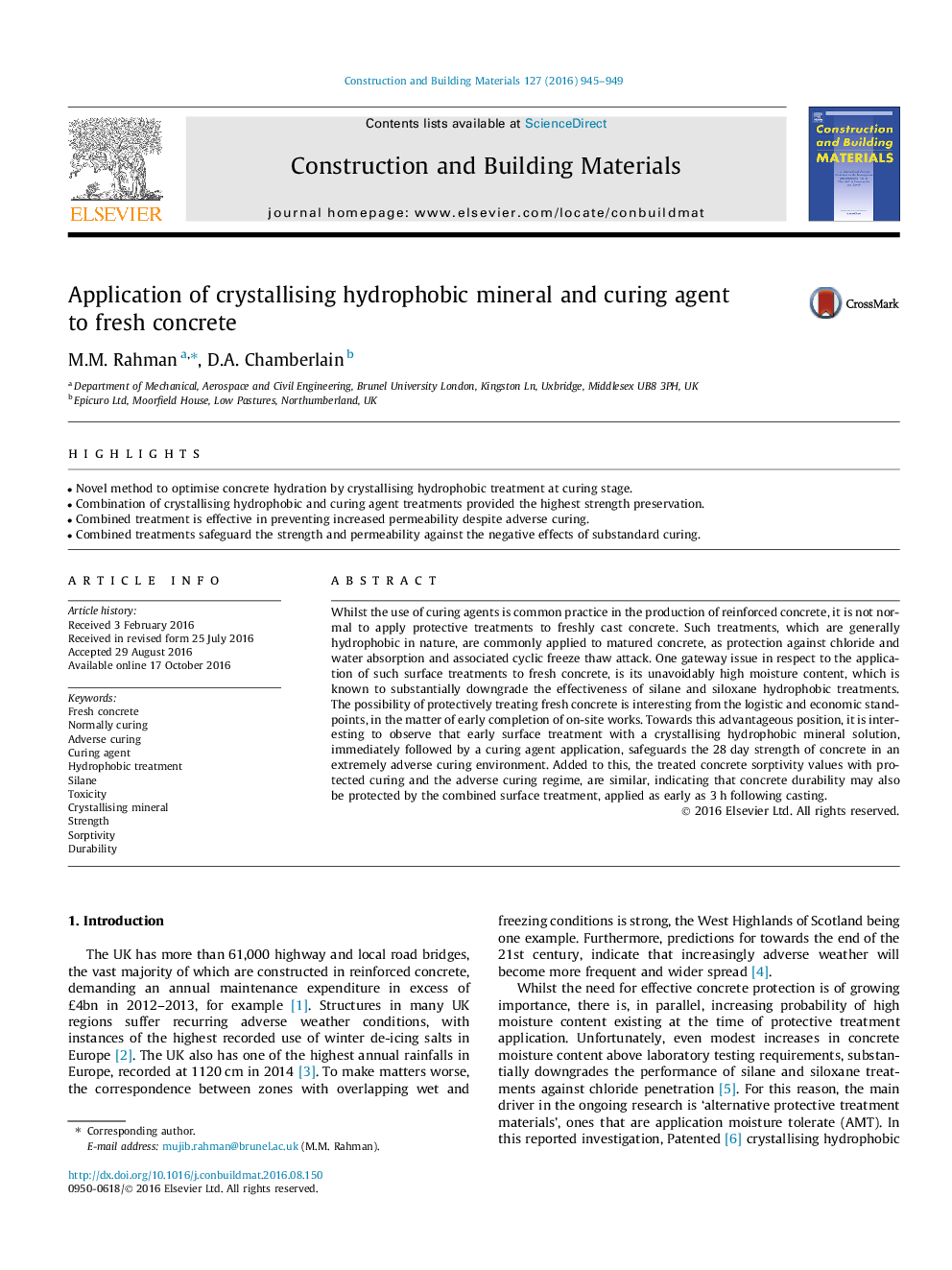| Article ID | Journal | Published Year | Pages | File Type |
|---|---|---|---|---|
| 4914003 | Construction and Building Materials | 2016 | 5 Pages |
Abstract
Whilst the use of curing agents is common practice in the production of reinforced concrete, it is not normal to apply protective treatments to freshly cast concrete. Such treatments, which are generally hydrophobic in nature, are commonly applied to matured concrete, as protection against chloride and water absorption and associated cyclic freeze thaw attack. One gateway issue in respect to the application of such surface treatments to fresh concrete, is its unavoidably high moisture content, which is known to substantially downgrade the effectiveness of silane and siloxane hydrophobic treatments. The possibility of protectively treating fresh concrete is interesting from the logistic and economic standpoints, in the matter of early completion of on-site works. Towards this advantageous position, it is interesting to observe that early surface treatment with a crystallising hydrophobic mineral solution, immediately followed by a curing agent application, safeguards the 28Â day strength of concrete in an extremely adverse curing environment. Added to this, the treated concrete sorptivity values with protected curing and the adverse curing regime, are similar, indicating that concrete durability may also be protected by the combined surface treatment, applied as early as 3Â h following casting.
Related Topics
Physical Sciences and Engineering
Engineering
Civil and Structural Engineering
Authors
M.M. Rahman, D.A. Chamberlain,
